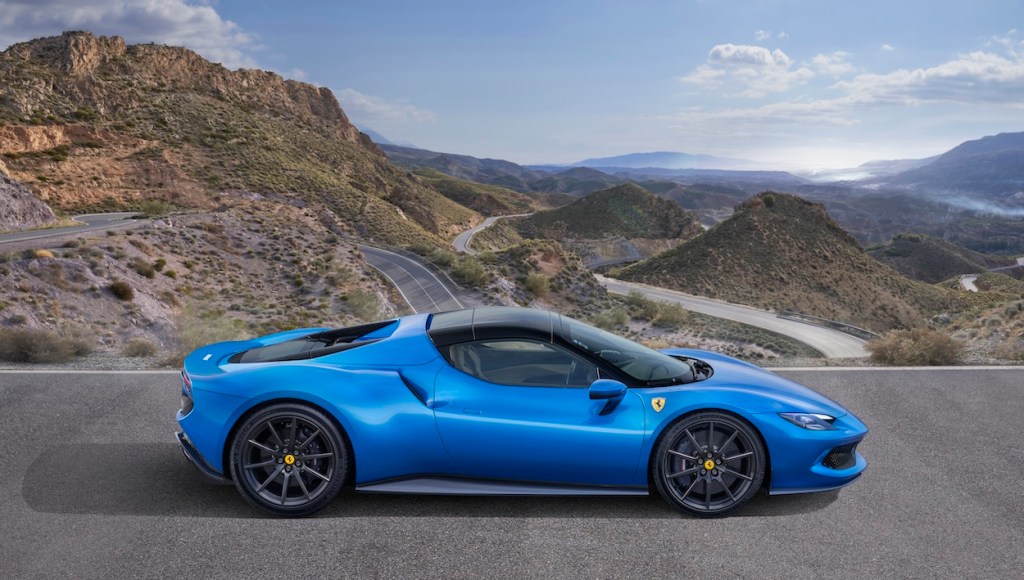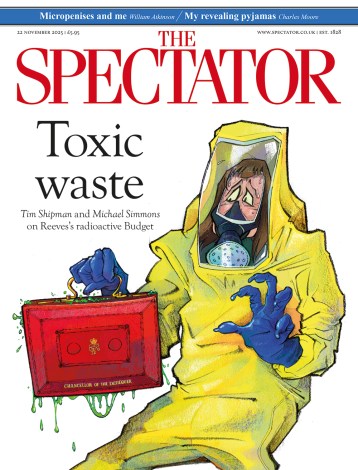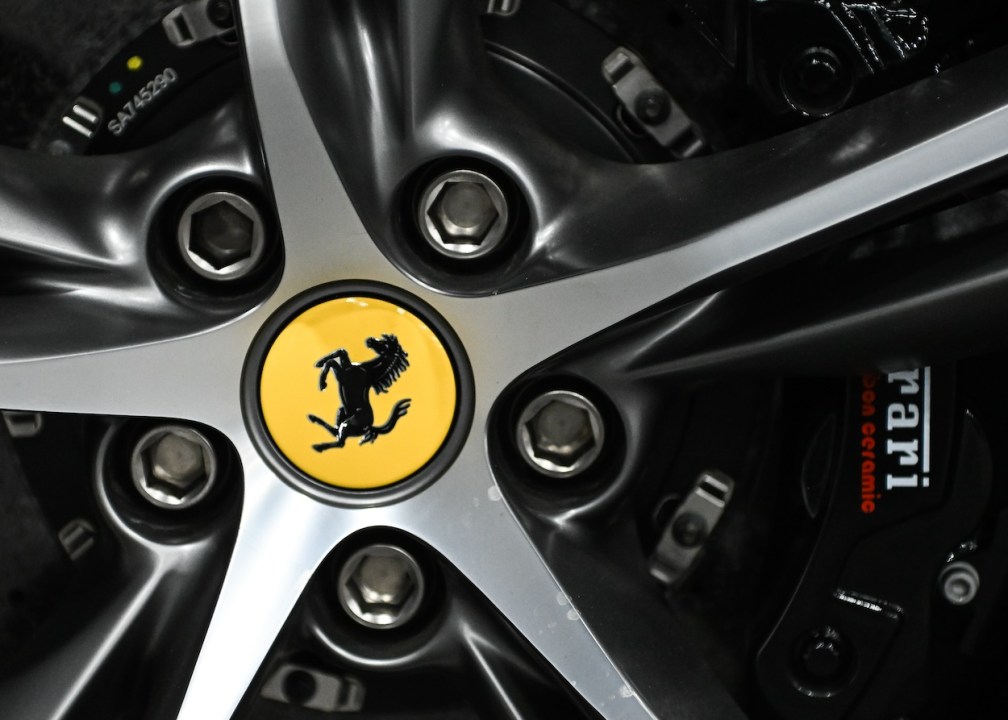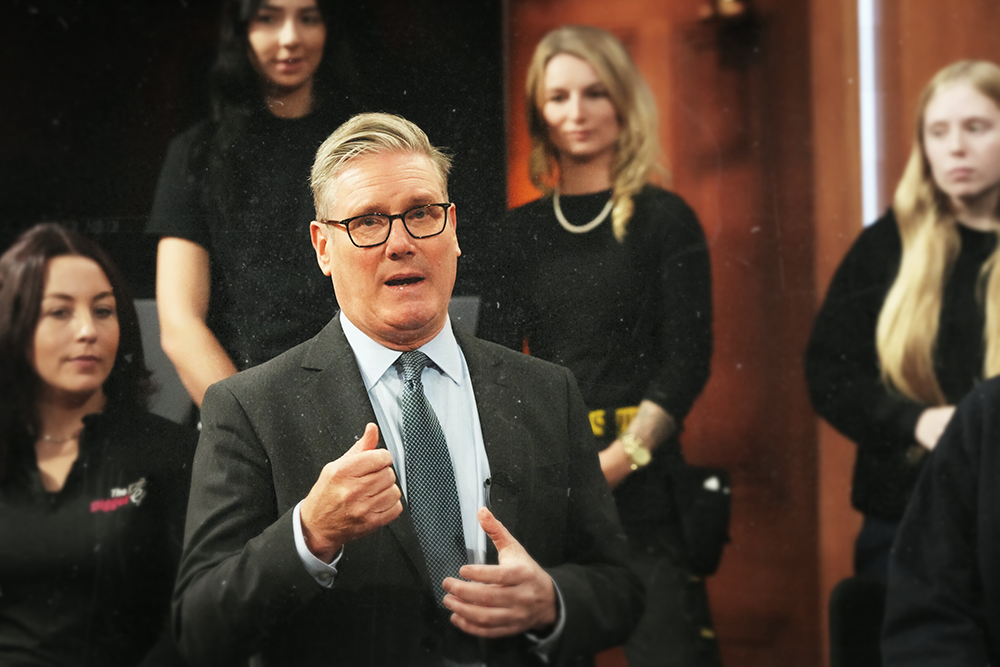I used to think I wasn’t attractive enough to drive a Ferrari. I still think that, but you reach an age, like Lester Burnham in American Beauty, when you don’t care any more, and in that despair you can pull off anything.
I am now exactly that age: the same age as the man driving the nervous-breakdown orange Lamborghini on the prom in Penzance. When I see him, I have to stop myself screaming the betrayed wife’s words to her adulterous husband in Moonstruck: ‘Cosmo, I just want you to know, no matter what you do, you’re gonna die. Just like everybody else.’ (‘Thank you, Rose.’ ‘You’re welcome.’)
After swanking in the Ferrari 296 GTS to the local Conservative club – my husband drove it to their death-throes summer barbecue, but they did not call it that – my review is this. Civilisation’s gifts are complex, and liberal democracy is ready to turn itself inside out. So: just give me this because I want it. I think this is what consumer capitalism is for, but I don’t do kitchenware. I suppose the medieval equivalent of Lester, of prom man, of me – is a better donkey, or horse: prior methods of escape from the shtetl, and oneself.
People don’t change, but cars do. The Ferrari 296 GTS is better but, as Clarkson, who is more car than man and doesn’t mind, says: cars, being perfected, are almost over. They are a mirror.
And so, marques embody the clichés of the countries that produced them. I call it petrol nationalism. It is completely sex-based: Bond kept the Aston Martin longer than any woman, just as Maverick (not quite Top Gun) ended up sleeping with his aeroplane. But no car is more beautiful than the Ferrari, because Italians do the visual arts better than anyone has done them, ever. (My evidence is this: Venice is a fishing village.)
The press car is blue, thank God. Of course, I want a red one: ‘Rosso Corsa’, the original FIA designation for Italy because the FIA decided that, if Italy were a colour, it would be red. (We are green, or at least we used to be. Perhaps we should beg for a change because that will fix us.) I just don’t want anyone to know I want one.
Ferrari has produced hundreds of cars since the teenage Enzo Ferrari turned down a job with Fiat, because car design is as much compulsion as job. Any attempt to understand Ferrari names is a fool’s game but this tiny, curvaceous and very blue car, invoking the simplicity of the Ferraris of the 1960s, is as perfect a thing as I have ever seen. It debuted in 2022 with a 2.9-litre twin-turbo V6 engine with an immense noise. It is a plug-in hybrid, a two-seater with a retractable roof and to me – I am no engineer – it combines propulsion (the 296 is the most responsive car I have driven since the last Ferrari) with a closeness to the road that is, if not exactly soothing, consoling. That is: it made me feel safe and I am a terrible driver.

Driving a Ferrari is like falling in love: it holds the same balance of confidence and fear. The key is to feel worthy, and if you don’t – and who does? – just fake it. The car is here to help you. Like all great works of art, it has fragility in common places: that is, it does not like speedbumps. The speedbump is the enemy of the Ferrari, as surely as the free press is the enemy of the tyrant.
When I approach the Ferrari HQ in Slough – this is inverse vanity; if I can pull off a Ferrari, Ferrari can pull off Slough – there are many speedbumps, and the Ferrari needs to be raised and lowered over them with a button. This reminds me of the princess cows on the Zennor moors who are too posh to do anything but be married and produce even more beautiful cows: but I have never seen them angry. It is, after she – for some reason this Ferrari is she – ate the A303, and she did eat it, she left all in her happy slipstream, adorable. She costs £280,000 and rising. As oligarchs say in the springtime of collapse: buy, buy, buy!








Comments